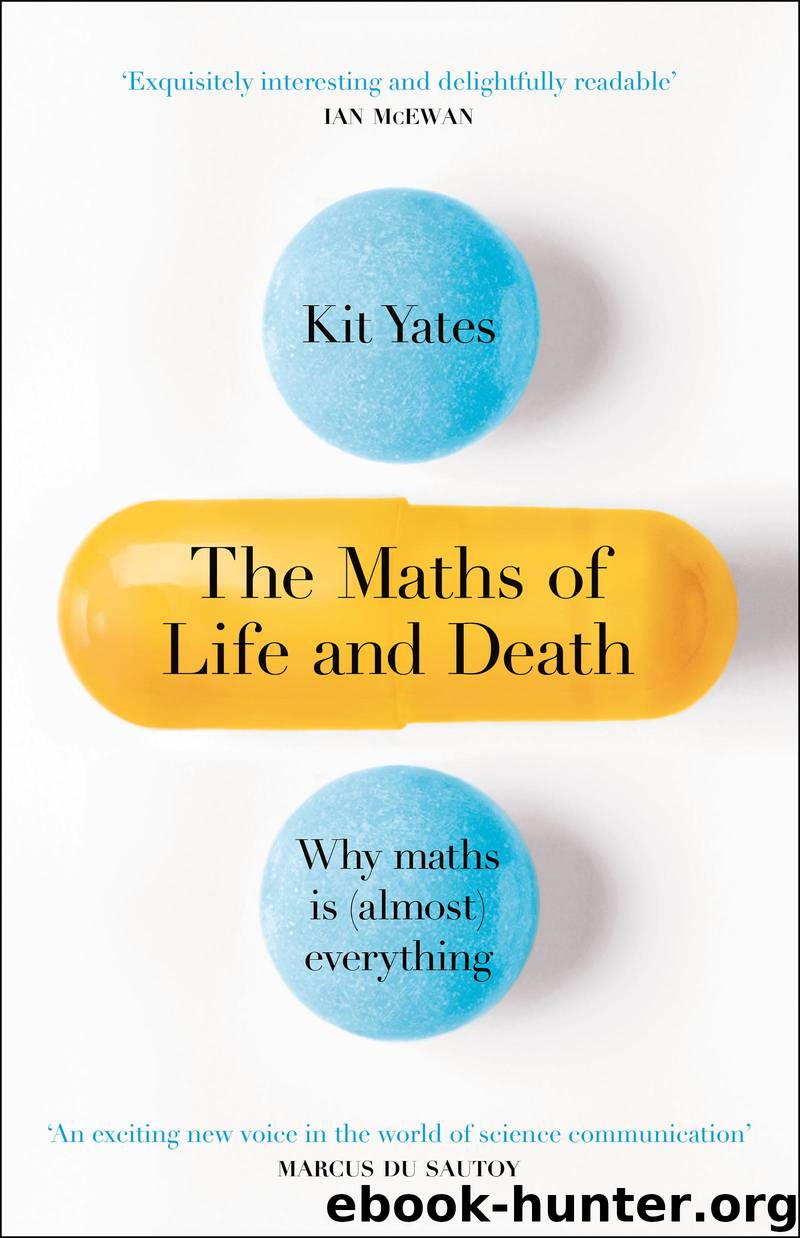The Maths of Life and Death by Kit Yates

Author:Kit Yates
Language: eng
Format: epub
Publisher: Quercus Editions Ltd
Published: 2019-08-19T12:47:05+00:00
Spotting the spin
The debate on gun legislation in the US still rages today. In the wake of the Las Vegas shooting, in October 2017, in which 58 people were killed and hundreds more injured, Sebastian Gorka, recently relieved of his duties at the White House, participated in a round-table debate on gun control. Gorka, who, as we saw at the start of the chapter, is no stranger to making bold, unsubstantiated claims, waded into a discussion about restricting the sales of firearms and their accessories and took the debate in an unexpected direction:
. . . It’s not about inanimate objects. The biggest problem we have is not mass shootings, they are the anomaly. You do not make legislation out of outliers. Our big issue is black African gun crime against black Africans . . . black young men are murdering each other by the bushel.
Assuming Gorka was referring to African Americans, this sounds very much like a rehash of the bad statistics that were discredited earlier in this chapter. Gorka’s repeated transgression highlights one of the situations in which you should be most on your guard against bad statistics: the serial offender. People who have shown a disregard for the accuracy of their figures once are unlikely to be more scrupulous in the future. The Washington Post’s Glenn Kessler, one of the pioneers of political fact-checking, regularly analyses and rates the statements of politicians on a scale from one to four ‘Pinocchios’, depending on the degree to which they have bent the truth. The same names crop up over and over again in his reports.
There are other more subtle signs that indicate a manipulated statistic. If presenters are confident of the veracity of their figures then they won’t be afraid to give the context and the source for others to check. As with Gorka’s terrorism tweet, a contextual vacuum is a red flag when it comes to believability. Lack of details on survey results, including the sample size, the questions asked, and the source of the sample – as we saw in L’Oréal’s advertising campaign – is another warning sign. Mismatched framing, percentages, indexes and relative figures without the absolutes, as in the NCI’s ‘Breast Cancer Risk Tool’, should set alarm bells ringing. The spurious inference of a causative effect from uncontrolled studies or sub-sampled data – as often seen in the conclusions drawn from trials of alternative medicine – are yet more tricks to watch out for. If an initially extreme statistic suddenly rises or falls – as with gun crime in the US – be on the look-out for regression to the mean.
More generally, when a statistic is pushed your way, ask yourself the questions ‘What’s the comparison?’, ‘What’s the motivation?’ and ‘Is this the whole story?’ Finding the answers to these three questions should take you a long way towards determining the veracity of the figures. Not being able to find the answers tells its own story.
•
There are multiple ways to be economical with the truth using mathematics.
Download
This site does not store any files on its server. We only index and link to content provided by other sites. Please contact the content providers to delete copyright contents if any and email us, we'll remove relevant links or contents immediately.
| Applied | Geometry & Topology |
| History | Infinity |
| Mathematical Analysis | Matrices |
| Number Systems | Popular & Elementary |
| Pure Mathematics | Reference |
| Research | Study & Teaching |
| Transformations | Trigonometry |
Modelling of Convective Heat and Mass Transfer in Rotating Flows by Igor V. Shevchuk(6406)
Weapons of Math Destruction by Cathy O'Neil(6214)
Factfulness: Ten Reasons We're Wrong About the World – and Why Things Are Better Than You Think by Hans Rosling(4713)
A Mind For Numbers: How to Excel at Math and Science (Even If You Flunked Algebra) by Barbara Oakley(3256)
Descartes' Error by Antonio Damasio(3247)
Factfulness_Ten Reasons We're Wrong About the World_and Why Things Are Better Than You Think by Hans Rosling(3216)
TCP IP by Todd Lammle(3154)
Fooled by Randomness: The Hidden Role of Chance in Life and in the Markets by Nassim Nicholas Taleb(3080)
Applied Predictive Modeling by Max Kuhn & Kjell Johnson(3041)
The Tyranny of Metrics by Jerry Z. Muller(3028)
The Book of Numbers by Peter Bentley(2928)
The Great Unknown by Marcus du Sautoy(2661)
Once Upon an Algorithm by Martin Erwig(2621)
Easy Algebra Step-by-Step by Sandra Luna McCune(2603)
Lady Luck by Kristen Ashley(2553)
Police Exams Prep 2018-2019 by Kaplan Test Prep(2516)
Practical Guide To Principal Component Methods in R (Multivariate Analysis Book 2) by Alboukadel Kassambara(2512)
All Things Reconsidered by Bill Thompson III(2370)
Linear Time-Invariant Systems, Behaviors and Modules by Ulrich Oberst & Martin Scheicher & Ingrid Scheicher(2346)
